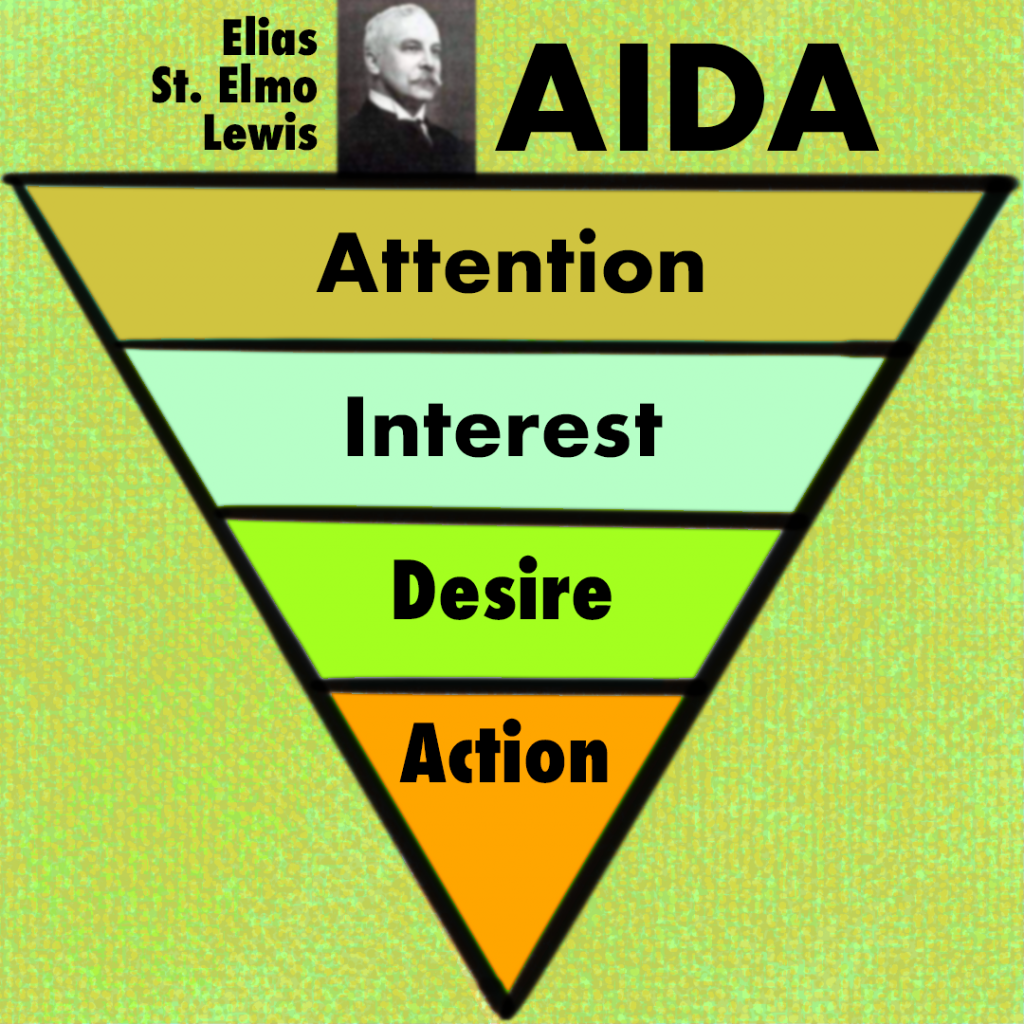Do you know the four steps that must take place before a consumer will make a purchase? These four steps were identified more than a century ago, and yet they are still relevant today.
In business we like acronyms. The one we’re looking at today is AIDA. First things first, how do you say this “word”? Honestly, I’m not completely sure. Some say AY-E-DA and some say IDA. But I’m sticking with the pronunciation I learned many years ago in school because I think it’s the simplest and most intuitive: AY-DA.
And though we as marketers might not be able to agree on the pronunciation of AIDA, most of us do think that this acronym is a great way to remind us of four key things we need to do to motivate purchases.
Lead your customer through these steps
AIDA is a model that illustrates a consumer behavior funnel. It’s a sequence of things we need to make happen in the marketing process, moving from top to bottom, to motivate the consumer to make a sale.
The AIDA model was developed way back in 1898 by Elias St. Elmo Lewis, an American businessman who established an early advertising agency. Lewis was a marketing pioneer who did a lot of study regarding consumer behavior.
I believe that all successful marketers intuitively use the four steps of AIDA, even when they’re not aware of the concept. But it’s helpful for us to make sure we have implemented these four steps that lead to convincing a consumer to make a purchase.
Let’s look at what AIDA stands for:
Attention
First, we must get attention. That’s the A in AIDA. Some say it can also stand for Awareness. Awareness and attention are the first steps to ensure a consumer knows that your product — and your marketing — are there.
In an ad, for example, we might try to get a consumer’s attention with an interesting photo or a compelling headline. We must pique a potential customer’s curiosity, so they pay attention.
Interest
Once we do that, we must quickly begin presenting information that continues to interest potential buyers. We must convey meaningful benefits to them, so they’ll want to know more. That might be with a testimonial or bullet points or engaging body copy.
If we can get the consumer interested enough to learn about what we’re offering, and if what we’re marketing meets a consumer’s need, then we’ll have moved them to the next crucial step.
Desire
We want to create desire in the consumer for the product. In other words, before they decide to make the purchase, they must want the product. And when the consumer feels that desire, we then move to the last step.
Action
We want them to reach out and connect with us in some way, That might mean coming into our store and buying the product or making an online purchase. Or, if the product is complex and requires more shopping, the action might be getting them to request more information or download a brochure or call to speak with a representative.
Whatever the action is, it’s all about getting the customer to make a move, to do something that will hopefully lead to a purchase or connect them to us in a tangible way.
Understanding AIDA gives us a simple framework that still makes sense today nearly 125 years after it was identified. AIDA is a quick checklist that helps us
- get Attention,
- create Interest,
- develop Desire, and then
- encourage the consumer to take Action.
So thanks, Mr. Lewis. You were ahead of your time.
Of course, things are always changing in the world of marketing, and in today’s world the experts have expanded on the AIDA model and they’ve added a fifth step. One that I think makes a lot of sense.
I’ll visit with you about that next time. (And yes, building a little suspense is another good marketing tool.)
